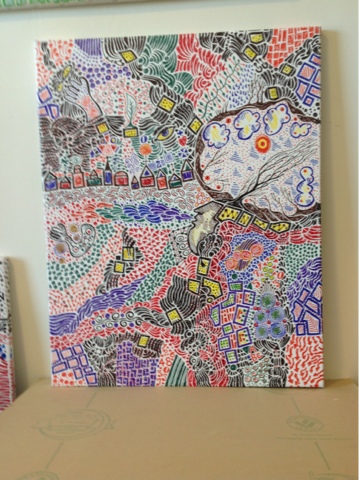"Things hidden in my head"
Copyright 2012 © Ronald D. Isom, Sr.
This blog is a division of the CODEX ISOM a complete guide to the collected works and writings of Ronald D. Isom, art educator and artist. A study of the heart, soul and mind. Creating esoteric connections to the universe. Without symbols our lives would be as spiritually impoverished as sleep without dreams.
Tuesday, April 30, 2013
Monday, April 29, 2013
Sunday, April 28, 2013
Friday, April 26, 2013
"Things hidden in my head"
Copyright 2013 © Ronald D. Isom, Sr.
"Do you ne'er think what wondrous beings these?
Do you ne'er think who made them, and who taught
The dialect they speak, where melodies
Alone are the interpreters of thought?
Whose household words are songs in many keys,
Sweeter than instrument of man e'er caught!"
- Henry Wadsworth Longfellow's 'Tales of a Wayside Inn'
"Do you ne'er think what wondrous beings these?
Do you ne'er think who made them, and who taught
The dialect they speak, where melodies
Alone are the interpreters of thought?
Whose household words are songs in many keys,
Sweeter than instrument of man e'er caught!"
- Henry Wadsworth Longfellow's 'Tales of a Wayside Inn'
Thursday, April 25, 2013
I just don't get it.
Recently,
I have been fielding question about my art from from residents of the
independent living center where I reside. One of the most common
questions relate to where I get my ideas and occasionally someone
will mention that that my work “look like” some known artist.
Those questions are usually veiled attempts to suggest that my work
may not be original. A particularly difficult question or response
is always some form of “ I just don't get it” or I like pictures
of things I recognize.” These ego related questions are the most
annoying. The questions and opinions are not new, I have been asked
the same questions and heard the same opinions from students, family
members and friends for over sixty years.
Originality
is a ghost and one could question philosophically whether originality
really exists. What really matters is our personal approach to art
and the way in which we express our experiences and influences on a
canvas; that is the high point of art and art criticism; anything
else is a moot point and ego driven drivel.
"Things hidden in my head"
Copyright 2013 © Ronald D. Isom, Sr.
Tuesday, April 23, 2013
Organic undergrowth
boscage, boskage, brake, brush,
brushwood, bush,coppice, copse,
thicket, understory, underwood
"Things hidden in my head" Copyright 2013 © Ronald D. Isom, Sr.
Wednesday, April 17, 2013
Horror Vacui
Horror
vacui art is an art form that expands on Aristotle's theory of horror
vacui (that
nature abhors a vacuum, and therefore empty space will always try to
fill itself with a gas or liquid to avoid being empty) and includes
visual interpretations in artwork.
Horror vacui artwork involves the
artist leaving no piece of the canvas uncovered. There is a
fear of empty space in the works of any horror vacui art, and so
artists will cover every inch of their canvas in detail to avoid
leaving any remnants of blank space.
Horror vacui art had been practiced by ancient Greek and Islamic
artists, and was even evident among the many indigenous tribes of
Central and South America. However, with regards to the term horror
vacui,
this is credited to 20th century author, scholar, and critic Mario
Praz. Mario used the term to help describe the suffocating atmosphere
created by Victorian Age interior design.
Monday, April 15, 2013
Subscribe to:
Posts (Atom)




